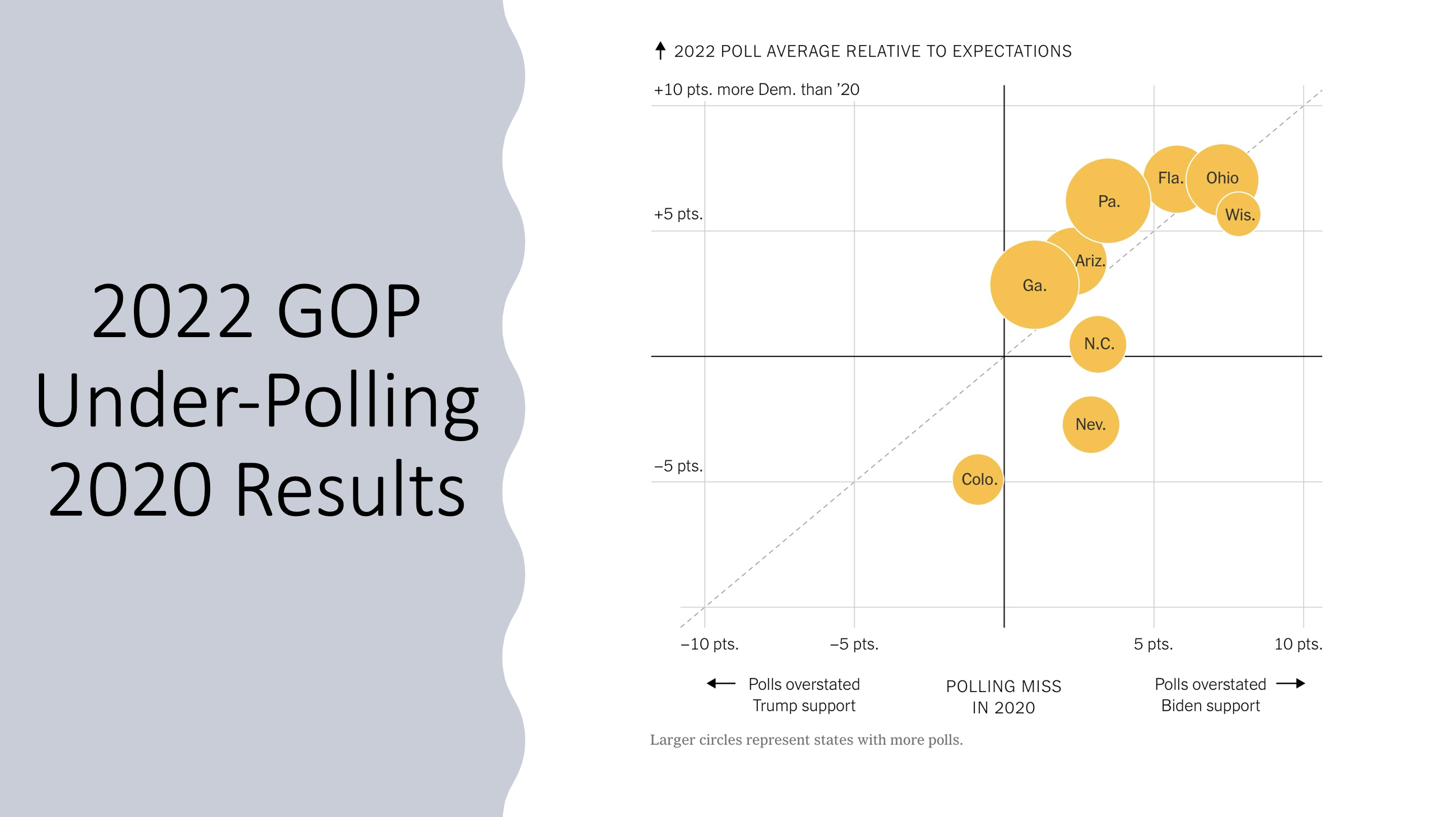I’m genuinely worried about this fall. Many current polls are undercounting Republicans. The number of abusive respondents is growing, occurs at a higher rate among political surveys, and exists across the dozens of panel suppliers we’ve tested.
Randy Ellison (Targoz Market Research)
When the Washington Post (“2020 presidential polls suffered worst performance in decades”) and New York Times (“Yes, the Polling Warning Signs Are Flashing Again”) report political polls over-count Democrats, it just confirms what conservatives have always suspected. In fact, both papers confirmed what an industry study found; polls are under-counting Republicans by an average of 5 points.
As we head into the midterms, the flawed polling continues because of three survey errors: (1) outdated “likely voter” models, (2) “shy” Republican voters, and (3) counting too few non-college graduates. The Post reports this happened in 2016 and worsened in 2020, when the under-count was highest “in whiter, more rural, and less densely populated states – with more Trump supporters.”
The American Association for Public Opinion Research (AAPOR) study found what looks like outright fraud; polling firms rely on compensated respondents supplied by third parties, duplicate respondents, and count fictitious respondents (bots and automated click farms). Market researcher Randy Ellison told The Hill, “the industry knows bots and click farm problems are rampant.”
Ellison also said it’s yet to be corrected. The obvious red flag here is partisan intent. Disheartening polls can hurt Republican turnout. Why cast a vote that does not matter? Who likes voting for the loser? It’s no different than voters staying home when elections are called before their local polls close.
Ellison also noted the Democrat over-count “is growing” this election season. This would mean Republicans are out-performing what’s widely reported in the media, who have Democrats either tied or leading in eleven “swing-state” Senate races. If the polls weren’t repeating the same mistakes, nine of those states would favor Republicans and two more would be toss-ups. The election map below doesn’t reflect the mistakes of the past. Guess what? The GOP is poised to gain 4 Senate seats.

The calculus for the “corrected” senatorial election map overweights the latest Trafalgar state poll, because their surveys have been the most accurate since 2016 (e.g. a UNF poll has the Democrat 2 points ahead of Senator Rubio in Florida, while Trafalgar has the Republican up by 2). Trafalgar’s poll is then adjusted by AAPOR’s 2020 bias number (e.g. the polls over-counted Wisconsin Democrats by an average of 9 in 2020). This “adjusted” number is then re-adjusted by the Democrat’s slippage since July (e.g. Democrat Patty Murray (WA) has slipped 15 points this summer).
If this map is too good to be true, it is at least reasoned. Why not use the most accurate poll, adjust for over-counting that the AAPOR admits, and look for slippage as the Dobbs anger fades – perhaps replaced by student loan forgiveness as the new anger issue? Take Washington, where Senator Murray (D) is 15 points below her 2016 popular vote share. She has slipped a lot (15 points) since June; something’s going on out there.
The numbers are compelling, but the midterms are a referendum on Democrat control, and there’s not much they can spin as good news. It didn’t get any better Tuesday, when US stock indices tanked on news of worsening inflation in August. That means a big rate hike from the Fed is THE expectation. That means more “recession” talk, which means more jittery voters – and THAT is why Democrats cannot be ahead in the polls.
